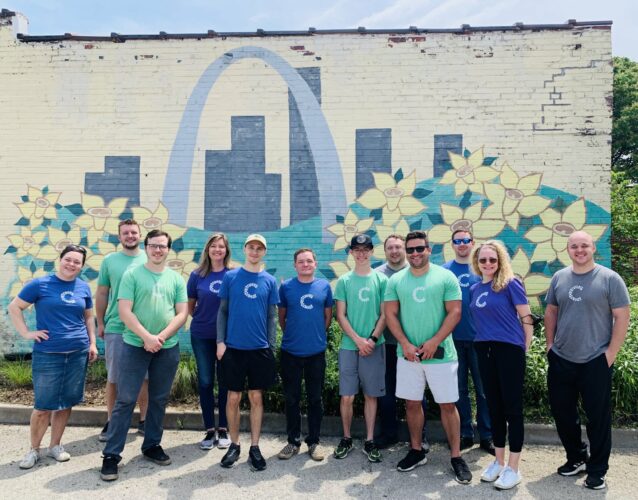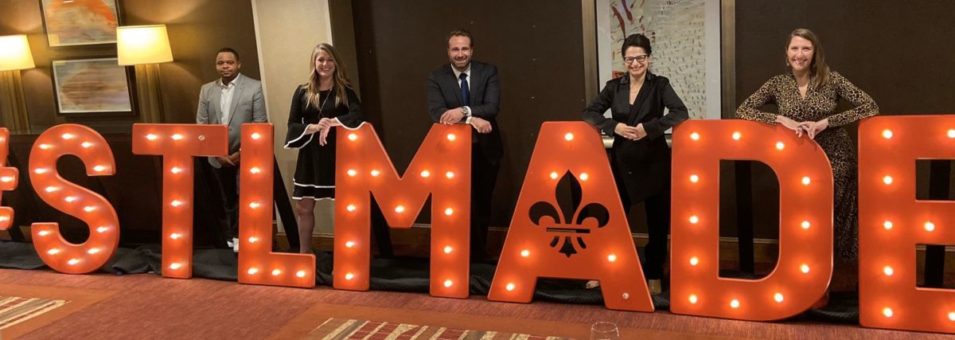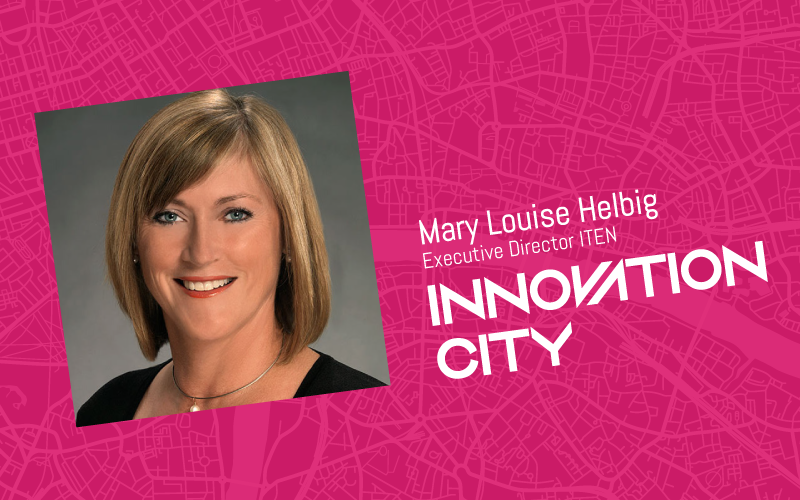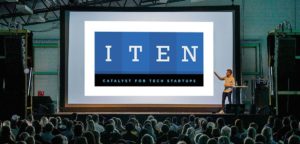How to Take TechSTL Beyond Dreams of Single Platform
I’m glad to report that, following pressure from EQ in February, TechSTL has contracted a local web development firm for future work and sponsored an independently produced startup pitch event. Plus, Lindenwood has posted a job for ITEN Mentor Relations, which suggests some of the grant money is going to create new roles in the ecosystem, which I applaud.
Future Projects
TechSTL has also promised St. Louis a new single platform for “regional collaboration,” but the funds to develop that have been appropriated from a second, different, grant from a previous initiative not associated with the tech council. Those funds were specifically earmarked for implementing a solution called StartupSpace, out of Florida, and TechSTL has spent the last two months deploying that additional cash (from the second grant) into “building a web app” that connects all the Entrepreneur Support Organizations (ESOs) in St. Louis.
As I initially predicted, TechSTL also plans to purchase a job board solution. Consider, a software platform out of Silicon Valley is under consideration, as it is the same platform which Cultivation Capital currently uses.
Kudos to Emily
Regarding the single platform solution, I also want to applaud and recognize TechSTL’s founding executive director, Emily Hemingway, for reaching out to me personally to explore taking me up on my offer to use EQ as their tech stack. Although, in the end, we both reached the conclusion that a partnership wasn’t possible, I really appreciate that she considered working with me.
Before I continue, if it’s not clear to readers, I maintain that Emily is the right person for the role and is doing a good job with TechSTL —I truly believe she is doing the best she can do and, as detailed above, she is making the right moves. She has already become a lynchpin connecting disparate parts of the community and I want her to succeed.
My Bone of Contention
However, for reasons outside of her control but baked into the original plan before her time, I still contend that TechSTL:
- Has not been well-positioned for future success by it’s collaborating organizations;
- Has strong ideological support but very little practical or material support from board and steering committee members;
- Has a membership-based revenue generation plan that simply does not go far enough and risks keeping the organization in a permanent state of underfunding over the long term.
I Think We Should Demand More of the Tech Community
If the tech council does not demand significantly more from its members, my fear is that TechSTL will fail to harness the incredible pent up demand to succeed that exists in this city, and devolve into a full-time social media role. As I have said many times, we don’t need another “storytelling” platform, we need to fund more job roles around curating, collecting and creating those stories — i.e. truly invest in the creative class that lives abundantly in STL.
The solution I propose in this article is that TechSTL should make a condition of using their forthcoming single platform, that member organizations commit to making a simultaneous investment in creating junior staff positions at TechSTL to administer the platform on their behalf and act as an ecosystem concierge.
That will increase membership fees, ensure the platform gets used, and increase headcount of young professionals working in St. Louis, with skin in the game to create a world-beating tech ecosystem.
Dreaming of a Single Platform
Following our meeting in Forest Park, which I discussed in a post on February 14th 2022, I offered Emily the use of my own all-in-one jobs, events, training and storytelling platform for free, because I had come to the conclusion that I cannot compete with the city, —TechSTL— so I might as well donate my own solution —EQ— and find something else to do.
Like TechSTL, I used to believe that St. Louis might benefit from “members of the ecosystem” collaborating on a single media platform. It’s not a particularly original belief, as the single “storytelling” platform concept has whirled around the city for years. In the five years I’ve lived here, TechSTL is the fourth iteration —or incarnation— of this proposal.
Nightmares of a Single Platform
However, from my experience building my own vision of this concept over the last three years, I’ve concluded that there’s little proof that anyone will actually use a single platform. It’s been an uncomfortable truth to accept: the idea of a single platform is actually nothing but a recurring fantasy.
I’ve had to make peace with the fact that I’ve unwittingly shouldered the cost of testing most of the city’s assumptions at no expense to the city. What I discovered is that the problem is not a lack of tech capabilities, but a lack of time, drive and real skin-in-the-game commitment from local ESOs.
Challenges of a Single Platform
I know this because I still run one of the single platforms left over from past initiatives. EQ was born as a single platform for the ecosystem. (Yep, it was a print magazine; this was back in the days when “platform” was still understood to mean media platform rather than technology). Moreover, as EQ, I even acquired the digital assets of AccelerateSTL, after it was effectively decommissioned by the third iteration of this concept: #STLmade’s “the-stl.com.”
The only way I’ve managed to make EQ carry any useful information at all is because I knock on a lot of doors and hunt information down myself. The information rarely just comes to me, and that’s what the dream of the single platform really is: rivers of information flowing towards you.
Why Build a Web App Anyway?
TechSTL’s hope is that its “web app” will make it easy for all the nonprofits, venture capital, startups and ESO’s in the region to “collaborate,” because they will “all get a page” and their own dedicated interface for sharing their own events. TechSTL will aggregate them all on their website (just as EQ has attempted and Bourbon Friday is actually doing).
Calling this single platform “a web app” sounds cool and high tech, but it really just means a framework that can simultaneously function as software and a website. So a tech company saying they’re building a web app is equivalent to a chef saying they’re “making spaghetti.” Everyone can make spaghetti: if they’re a great chef it’ll be a great dish, if they’re not, it’s just spaghetti.
And just like spaghetti, you need ingredients. And ingredients for web apps is data. So TechSTL’s implementation of StartupSpace will only be as good as the data put into it.
Bad Data In, Bad Data Out
Although the web app may have a “back-end” where ESOs can input data, all StartupSpace does in a “storytelling” sense is output all of its data into a WordPress site – which, it so happens, is the same codebase that other St. Louis media platforms, such as EQ, 4thEst8, and theSTL, are also built on.
Which means in turn that StartupSpace is just a database tailored for ESOs. But worse, it’s a database that doesn’t necessarily have any special connection to the “front end” – to the part that actually gets displayed – which, of course, includes the actual “media bit” of any platform.
That means TechSTL can’t display the StartupSpace database in any specially tailored way – and in turn, that it will face all the same barriers and limitations of any “out of the box” website and media brand.
How you display information and get users to engage with it and find what they’re looking for is the other side of the challenge. This means that a lot of the “regional storytelling” issues that everyone hopes will be solved by technology, don’t get solved by technology as they under invest in the user engagement problem.
So, unfortunately, your expensive software platform just becomes “brochureware.”
User Engagement is the Real Challenge We Have as a Region
For what it’s worth, building better brochureware is essentially the challenge I’ve been obsessed with in designing EQ.
However, as I said, there’s a bigger problem with database-driven websites than outputs (e.g., public access to information). And that’s inputs (e.g. what information should we create). I can tell you from experience that the task of maintaining all the correct inputs is Sisyphean.
I’ve gotten this website to a point that every article published gives you an at-a-glance view of every company mentioned in the article, all the job roles they are offering and events they are hosting, so that readers are nudged with related resources about the ecosystem. It’s extremely advanced for a WordPress build.
But for the system to truly engage readers, it needs to be constantly updated with new information about jobs, events and news happening in the ecosystem.
To solve the staying up-to-date problem, every publication in St. Louis, myself included, 4thEst8, and even the St. Louis Business Journal, Post-Dispatch and St. Louis Magazine all have free tools to collect this data directly from users. We have “user generated content” forms so you can post your jobs, events and stories directly to our platforms, but they are almost never used.
An incredibly tiny proportion of readers actually use them. So, what’s especially infuriating to me, in regards to the persistent complaints of nonprofits, ESOs and civic-organizations that they “can’t tell their story” effectively, is that there is plenty of evidence that they don’t really try.
Which is not to imply that ESOs are unmotivated or lazy. In the case of ESOs, where there is arguably almost no alignment between the day job of fundraising and serving your audience, the motivation to distribute the information that serves your audience as far and wide as possible isn’t really there.
For all their clamoring about a single platform, ESOs tend not to make best use of any of the platforms currently available anyway. It’s already perfectly possible to put all the information out there in all the right places but, I imagine, the additional “communication labor” required to get the message out there is too much.
As someone who does this kind of work regularly, I agree it’s tedious and somewhat soul destroying to jump from platform to platform. You find yourself daydreaming, “Wouldn’t it be great if we had a single platform?” … as you log out of eventbrite to post your ticket page on Facebook and announce it on LinkedIn to get people to come to a talk that could’ve been on Zoom.
However, as I’ve already suggested, the solution is not software capabilities, it’s more human resources. Technology doesn’t help you do more with less people, if you don’t have enough people in the first place.
Technology Doesn’t Keep Information Relevant, People Do
Just like TechSTL, most of these organizations are run by HiPPOs: “the highest paid person’s opinion,” and there are so few junior roles at these organizations that none of the information work gets completed to the degree necessary for success. If organizations want to champion a unified tech ecosystem, then they need to create real jobs and real work opportunities.
Therefore, TechSTL’s council membership plan should not offer the single platform for any price, but trade it for a substantial commitment to hiring. Your membership should buy time, not technology and those funds should create as many junior staff positions evangelizing TechSTL as possible.
And if the smaller early-stage companies can’t buy time, but they still want to be members? Then they should be able to sell their time to other members to maintain and update the TechSTL information profiles on behalf of other members.
Aaaand… Talking of Jobs
As predicted, TechSTL is looking at a “job board” solution. Although they claimed in an email that they weigh up all the options (such as EQ’s job board or the Business Journal even), in reality the current suggestion is to use the same technology stack as Cultivation Capital.
Cultivation Capital’s job board is powered by Consider, out of Silicon Valley. Digital hiring practices have evolved so much in the context of social media that “job board” is now a functionally antiquated term. So I’m not critical of TechSTL considering more modern solutions; that seems smart.
However, given that members of Cultivation Capital are leading the TechSTL board, and the VC firm is likely to be the biggest financial benefactor from any of TechSTL’s future success, can we ask Cultivation Capital to donate their existing solution to St. Louis’ cause?
Why does TechSTL have to spend more money on something the Tech Council can already provide through its own board members? I’d also like to see Cultivation Capital provide a sanity check and some data to prove that the existing solution has made a material difference to their own cohort of entrepreneurs, before TechSTL has to shell out for a new solution.
Furthermore, what use is a board member VC firm that not only contributes nothing financially, but also contributes none of their capabilities in-kind? It’s the least Cultivation Capital could do. We should ask them to do so.
And if it’s a matter of conflict of interest that would already tell us a lot about how this organization should function in future.
As a community, we should insist that TechSTL board members bring something more to the table than vanity names and faces.
I think it is reasonable to expect the tech council to prioritize the use of in-kind donations from paying members to conserve federal funds for more pressing matters… like hiring junior staff and investing in real jobs in St. Louis, not software platforms in Tampa Bay or Silicon Valley.
From single platforms to regional job boards, none of these federally funded technology solutions are for our community if they’re not also creating jobs in our community. To use the metaphor of a supermarket, St. Louis’s Tech scene doesn’t need more automated self-checkouts, it needs more humble cashiers.













